Reverse osmosis filtration RO/DI is one of the most effective tap water purification systems for drinking water.
It’s become a “must-have” for reef aquariums containing corals and reef fish. And now, freshwater aquarists have discovered the many benefits of using reverse osmosis water in their aquariums.
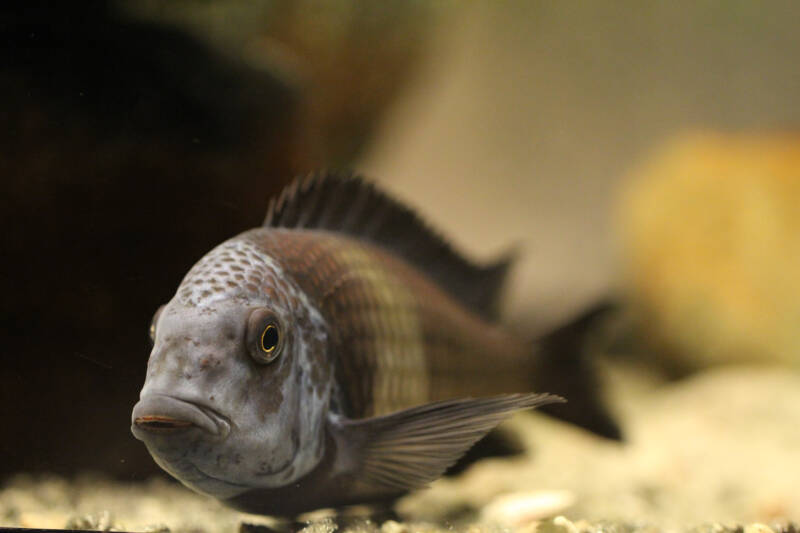
You may be wondering, “What’s RO, and why do I need it?” Let’s first take a look at the reverse osmosis filtration process.
[toc]
How Reverse Osmosis Filtration Works
The reverse osmosis process sends your tap water through a series of filter specialized cartridges to remove sediment, rust, chlorine disinfectants, and organic chemicals.
Next, the water is forced through a semi-permeable membrane. The membrane separates pollutants like heavy metals, nitrate, and phosphate from water.
RO also removes water hardness minerals and alkalinity. A small amount of water containing the concentrated pollutants and minerals is sent down the drain while the purified water is collected for use in the aquarium.
RO water is one step below distilled water in purity. Some aquarists save the water in a 55-gallon drum in their basement or garage.
If you’ve got a smaller aquarium and don’t need a lot of purified water, you can use a small pressurized RO storage tank that sits under the kitchen sink.
Why Should I be Concerned about Using Tap Water in My Aquarium?
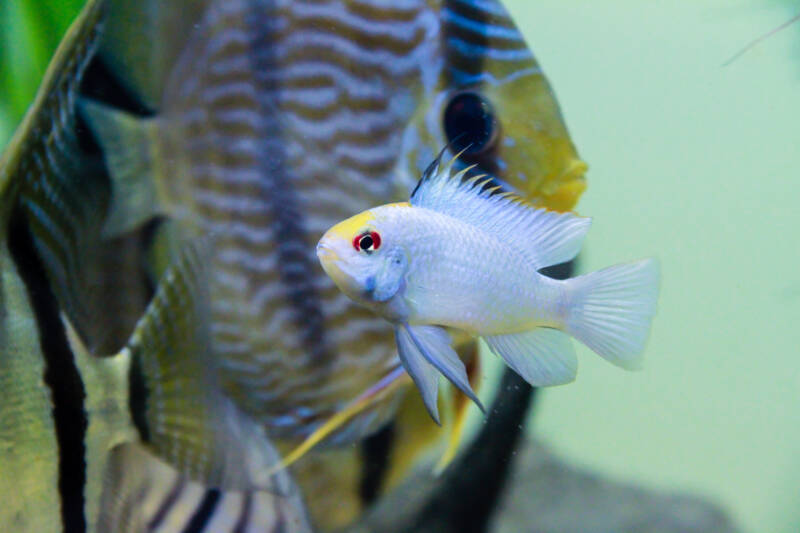
Water is the lifeblood of freshwater and reef aquariums. Unfortunately, tap water is rarely ideal for aquarium use.
Your water supply can come from many sources. If you have a well, the pump pulls water from the ground and brings it to your faucet. Other water sources include reservoirs and rivers.
Cities use a centralized water treatment plant to treat and distribute water to your home.
If the rock surrounding the water source is high in calcium and magnesium carbonate, these minerals will dissolve and create hard water.
Other water sources are low in dissolved minerals and are considered soft. Soft, acidic water can cause copper to leach from the pipes and contaminate your tap water.
Copper is very toxic to fish and invertebrates. Harmful lead can leach from solder used to join the water pipes.
Chlorine and chloramine are added to kill bacteria, viruses, and parasites. These disinfectants are highly toxic to aquatic life.
Phosphate-based corrosion inhibitors are often added to protect the pipes. Phosphate can trigger algae problems in your tank.
Many tap water sources contain nitrate. Nitrate leaches into the water supply from fertilizers, farming operations, and septic systems.
Is Tap Water Bad for Marine and Reef Aquariums?
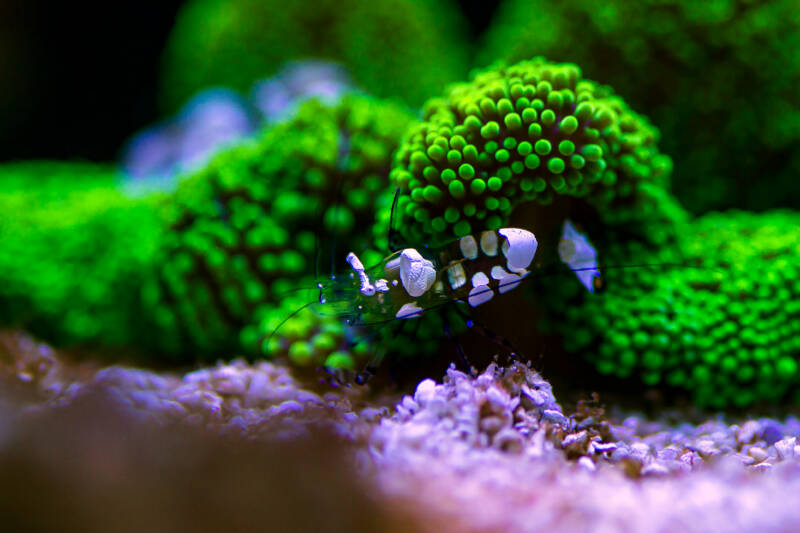
Marine fish and invertebrates like saltwater shrimp and LPS or SPS corals are very sensitive to certain pollutants.
Copper, for example, is found in just about all tap water sources that run through copper pipes. Excess copper can poison marine life.
Nitrates and phosphates are also common in tap water and are a source of pollution when added to a saltwater aquarium.
Synthetic sea salt is mixed into tap water to duplicate the water conditions found in the ocean. Home-made seawater is the key starting point of the marine ecosystem in our aquariums.
Using poor-quality tap water defeats the goal of recreating clean, safe seawater for your fish, corals, and other invertebrates.
Problems Caused by Tap Water in Freshwater Aquariums
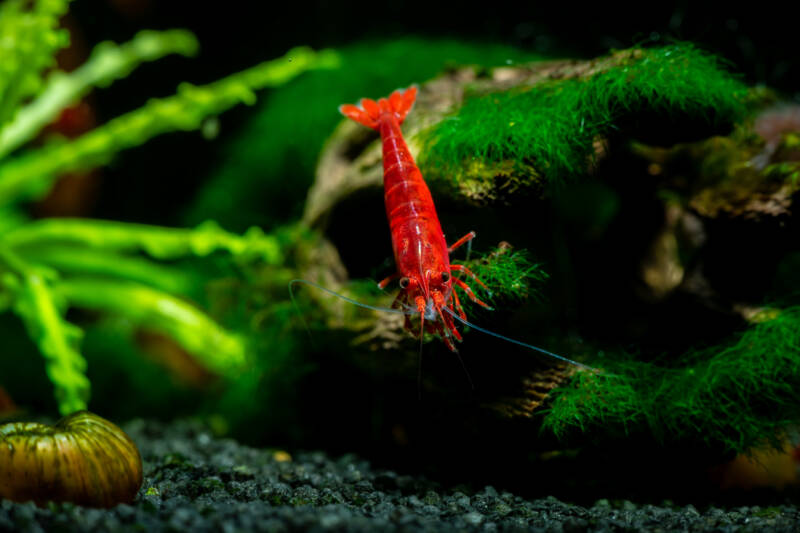
Unfiltered tap water can cause a variety of problems in freshwater tanks.
Many tap water sources have high alkalinity, also known as carbonate hardness. High carbonate hardness tends to cause the pH to run above 8.0.
If you try to lower the pH with a pH-Down type of product, it simply gets neutralized by the carbonates. The pH may go down for a day but rebound back up again the next day.
This rollercoaster effect is frustrating and makes it impossible to adjust the pH. Hard water leaves crusty hard-to-clean mineral deposits on the outside of the tank and on the light fixture.
Many tropical fish and plants prefer water with medium to low water hardness.
Unfiltered tap water can also contain heavy metals, which are especially bad for freshwater shrimp and sensitive tropical fish.
Algae-promoting phosphates and nitrates are common in well and municipal water supplies.
Reverse Osmosis Systems for Aquariums
You’ll find basic RO filtration systems at big box stores and online, but they aren’t the best systems for aquarium use. Here’s why.
The RO filtration systems sold for drinking water provide excellent drinking water, but it still can contain algae-promoting nutrients like silicate and nitrate. Generic RO systems allow small amounts of pollutants to slip through the filter system.
The best type of tap water purification system is an RO/DI unit.
This level of filter system combines the high efficiency of RO with the ultra-purification of a deionization (DI) cartridge.
A deionization cartridge contains ion-exchange resins that remove all traces of undesirable substances that pass through the RO, ensuring the filtered water is of the best quality.
How to Use RO/DI Water in a Marine Aquarium

Marine salt mixes are formulated to dissolve in pure water to meet specific levels of salts and trace elements needed by fish and corals.
RO/DI water adds no extra salts or minerals to upset the formulation. Salts will dissolve quickly with less cloudiness when you use reverse osmosis water.
RO/DI is ideal for topping off the tank too. If you use unfiltered tap water, you could be adding phosphates, nitrates, and metals to your tank with every top-off.
Using RO/DI to make saltwater and for topping off helps maintain a stable marine environment and reduce algae problems.
Using RO/DI in a Freshwater Tank
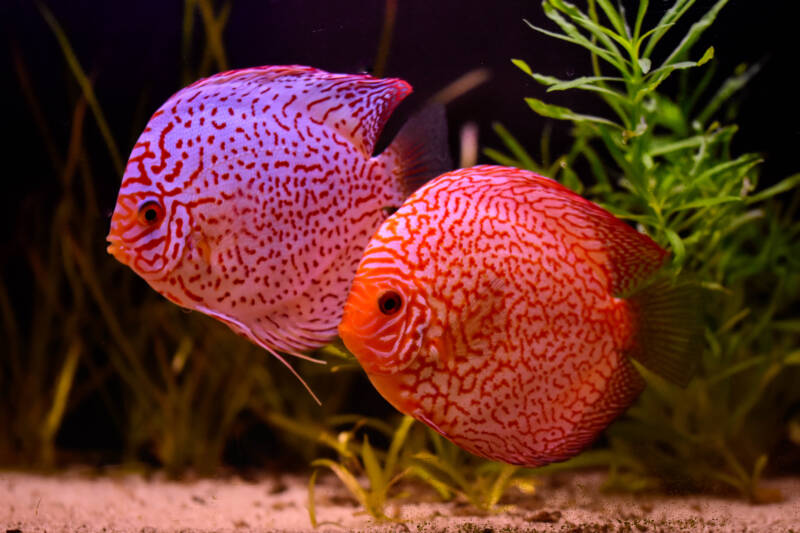
Reverse osmosis water is beneficial in all types of freshwater aquariums.
Using purified water for top-offs and water changes greatly reduces problems with algae growth on the glass, ornaments, and gravel. That’s because you’re not adding algae-promoting nutrients to the tank.
Since RO/DI water contains no minerals or alkalinity to stabilize pH, you can blend regular tap water into the RO to achieve the desired water hardness and alkalinity.
There are also mineral additives that allow you to reconstitute RO water to any hardness and pH level. Either way, you can custom blend the water to your liking.
If you have a planted tank with Amazonian fish, you’ll want low-mineral water that is acidic. RO/DI makes it easy to achieve.
If you’re keeping African cichlids that love hard water, use RO water and a special cichlid salt to add salts and minerals and stabilize the pH.
Final Thoughts
RO/DI water makes keeping any type of aquarium much easier. You’ll be able to create the ideal environment for your fish, plants, and invertebrates.
You’ll spend less time cleaning the glass and battling algae problems. You won’t have to worry about heavy metals and other undesirable substances accumulating in your tank.
RO/DI water is great for cleaning the glass and light fixtures. It leaves no streaks or mineral spots!
If you have questions or comments, please leave them below.
